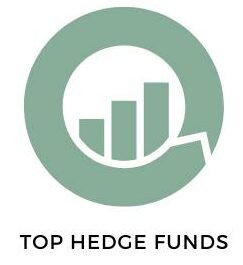In recent years, the investment landscape has experienced a seismic shift, with quantitative hedge funds emerging as key players in the financial markets. These funds leverage advanced technology, data analytics, and mathematical models to inform their trading strategies, redefining how investments are managed. This blog explores the rise of quantitative hedge funds and how technology is changing the game for investors and traders alike.
1. What Are Quantitative Hedge Funds?
Quantitative hedge funds, often referred to as “quant funds,” utilize mathematical models and algorithms to identify trading opportunities and manage risk. Unlike traditional hedge funds that may rely heavily on fundamental analysis and human judgment, quant funds focus on statistical analysis and data-driven decision-making.
Key Characteristics:
- Data-Driven: Quant funds analyze vast amounts of historical and real-time data to inform their strategies.
- Algorithmic Trading: Many quant funds employ automated trading systems that execute trades based on predefined criteria and algorithms.
- Diversification: By utilizing a systematic approach, quant funds can diversify their portfolios more effectively across various asset classes and strategies.
2. The Technological Revolution
The rise of quantitative hedge funds has been fueled by rapid advancements in technology. Several key developments have transformed the way these funds operate:
A. Big Data Analytics
The explosion of data availability has allowed quant funds to refine their models and strategies. By harnessing big data analytics, these funds can uncover patterns and correlations that traditional methods may overlook.
- Market Sentiment Analysis: Quant funds can analyze social media, news articles, and other unstructured data to gauge market sentiment and make informed trading decisions.
B. Machine Learning and AI
Machine learning algorithms and artificial intelligence (AI) are revolutionizing the way quant funds process information and make predictions. These technologies enable funds to adapt to changing market conditions and improve their predictive capabilities.
- Dynamic Models: AI-driven models can continuously learn from new data, allowing quant funds to adjust their strategies in real time.
C. High-Frequency Trading (HFT)
High-frequency trading, a subset of quantitative trading, involves executing a large number of orders at extremely high speeds. This strategy capitalizes on small price discrepancies and market inefficiencies.
- Speed Advantage: HFT firms leverage technology to execute trades in milliseconds, gaining an edge over traditional traders who cannot match that speed.
3. The Competitive Landscape
The rise of quantitative hedge funds has intensified competition in the investment space. Traditional hedge funds are increasingly adopting quantitative strategies to remain relevant and competitive.
A. Hybrid Models
Many traditional hedge funds are integrating quantitative approaches into their investment strategies. By combining fundamental analysis with quantitative techniques, these funds aim to enhance their performance and risk management.
B. Talent Acquisition
The demand for talent in quantitative finance has surged, with hedge funds seeking professionals skilled in data science, programming, and quantitative analysis. This trend has led to a more diverse workforce within the finance industry.
4. Challenges and Considerations
Despite their advantages, quantitative hedge funds face several challenges:
A. Model Risk
Quant funds rely heavily on mathematical models, which can be vulnerable to errors and assumptions. A faulty model can lead to significant losses, particularly in volatile market conditions.
B. Market Saturation
As more funds adopt quantitative strategies, the market becomes increasingly crowded. This saturation can erode the effectiveness of certain trading strategies, making it harder for funds to maintain their competitive edge.
C. Regulatory Scrutiny
The rise of algorithmic and high-frequency trading has attracted regulatory scrutiny. Hedge funds must navigate complex regulations to ensure compliance while maintaining their technological advantages.
5. The Future of Quantitative Hedge Funds
Looking ahead, the future of quantitative hedge funds appears promising, with several trends likely to shape their evolution:
A. Enhanced Collaboration with Data Providers
Quant funds are expected to deepen their partnerships with data providers to access alternative data sources, further refining their models and strategies.
B. Integration of ESG Factors
As environmental, social, and governance (ESG) considerations gain importance, quant funds may incorporate these factors into their algorithms, appealing to socially conscious investors.
C. Continued Technological Innovation
Advancements in technology, such as quantum computing and improved machine learning techniques, will likely enhance the capabilities of quant funds, allowing them to analyze data and execute trades more efficiently.
Conclusion
The rise of quantitative hedge funds marks a transformative shift in the investment landscape. By leveraging advanced technology and data-driven strategies, these funds are changing the way investments are managed and traded. As competition intensifies and technology continues to evolve, both quantitative and traditional hedge funds will need to adapt to stay ahead in this dynamic environment. For investors, understanding the implications of this shift can provide valuable insights into the future of investing and the strategies employed by leading hedge funds.













